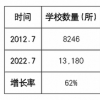您現在的位置是:首頁 >動態 > 2023-12-10 18:54:21 來源:
完成時態的結構及用法(完成時)
大家好,我是小夏,我來為大家解答以上問題。完成時態的結構及用法,完成時很多人還不知道,現在讓我們一起來看看吧!

現在完成時和過去完成時的區別
一、從結構上區別
現在完成時:主語 + have / has + 過去分詞 (肯定式)
主語 + have / has + not + 過去分詞 (否定式)
Have / Has + 主語 + 過去分詞 (疑問式)
過去完成時:主語 + had + 過去分詞 (肯定式)
主語 +had + not + 過去分詞 (否定式)
Had + 主語 + 過去分詞 (疑問式)
(二)從時間狀語區別
現在完成時: 常用的時間狀語包括 “now, today, tonight, this week, this year, already, yet, just, recently…etc”。
過去完成時: 常用的時間狀語包括 “by, at, before等構成的短語”。
注意:當表示一段時間,現在完成時和過去完成時都可以用for 或since引導的狀語。
例如:Have you had your lunch yet? 你吃午飯了嗎?
Yes, I have . I’ve just had it. 是的,我剛吃完。
I have had a clock now. 我現在有一個鬧鐘了。
Have you already posted the photos? 你把照片寄走了嗎?
The meeting had begun when we got there. 我們到那兒時,會議已經開始了。
We had learned about 5000English words by the end of last term.
到上學期末我們已經學了5000個英語單詞。
They had done the work at five o’clock. 在五點鐘的時候他們已經完成了那項工作。
I’ve known Li Lei for three years. 我認識李蕾已經三年了。
I have worked here since ten years ago. 自從十年前我就在這工作。
We had not heard from him since we left here. 自從我們離開以來一直沒有收到他的來信。
They had then been without sleep for twenty-four hours.這時他們已經有24個小時沒有合眼了。
(三)使用時注意事項
使用現在完成時應該注意:
1.“ have/ has got ”形式上是一種完成時,但和have/ has 為同一意義,即 “有”。
例如:Have you got a pen-friend? 你有筆友嗎?
Yes, I have. 是的,我有。
Has he got a lot of work to do? 他有許多工作要做嗎?
No, he hasn’t. 不,他沒有。
2. have/ has gone to 與 have/has been to 的區別
have/ has gone to 強調“去而未歸”; have/ has been to 強調“去而歸還”。 have/ has
been to常和once, twice, never, ever連用; have/ has gone to則不可。例如:
— Have Jack ever been to Beijing? 杰克去過北京嗎?
— Yes, he’s been there several times. 是的,他去過好幾次了。
— Where have Mary and Tom gone? 瑪麗和湯姆去哪里了?
— They’ve gone to London. 他們去倫敦了。
3.非延續性動詞不能用于“現在完成時 + 表示一段時間的狀語”的句型中。
這類動詞有:come, go, start, leave, die, buy, finish, join, borrow, stop等。但它們能夠
用表示持續狀態的相應的延續性動詞替換句中的終止性動詞。例如:
arrive, come → be here, be in
begin, start → be on
buy → have
die → be dead
fall asleep(ill) → be asleep (ill)
finish, end → be over
get to know → know
get up → be up
go out → be out
join → be in , be a + 名詞
leave, move → be away, be out of
使用過去完成時應該注意:
如果兩個動作緊接著發生,則常常不用過去完成時。例如:
When she came into the room, she found them sitting together singing.
她進屋時看見他們坐在一起唱歌。
After we said good-bye to our friends, we left the village.
在和朋友告別之后我們就離開村子。
---------------------------------------------------
總結:
現在完成時著眼于現在,強調過去發生的某動作對現在造成的影響和結果,或是由過去持續到現在的動作。
I have cleaned the classroom .(強調掃地所產生的結果:地干凈了!)
We have lived here for ten years.(“住”從過去持續到現在的動作用現在完成時)
We have lived here since we came here.(“住”是從過去持續到現在的動作用現在完成時)
過去完成時則主要體現過去發生的兩動作的先后有別,表達的是“過去的過去”,即比過去發生的某動作都還要“過去”,兩動作中先發生的就用過去完成時,后發生的則只用一般過去時。運用過去完成時的句子往往有兩過去的時間或動作,一定要注意這點喲!
Mr Green had lived in New York for ten years before he came to China.("來”中國已過去,而先前“住”在紐約更過去!)(另外注意:“住”在紐約可沒有持續到現在喲!)
We had learned 1000 words by the end of last term.
(“上期期末”已過去,而是在其前“學”的就更過去了!)
本文到此講解完畢了,希望對大家有幫助。









